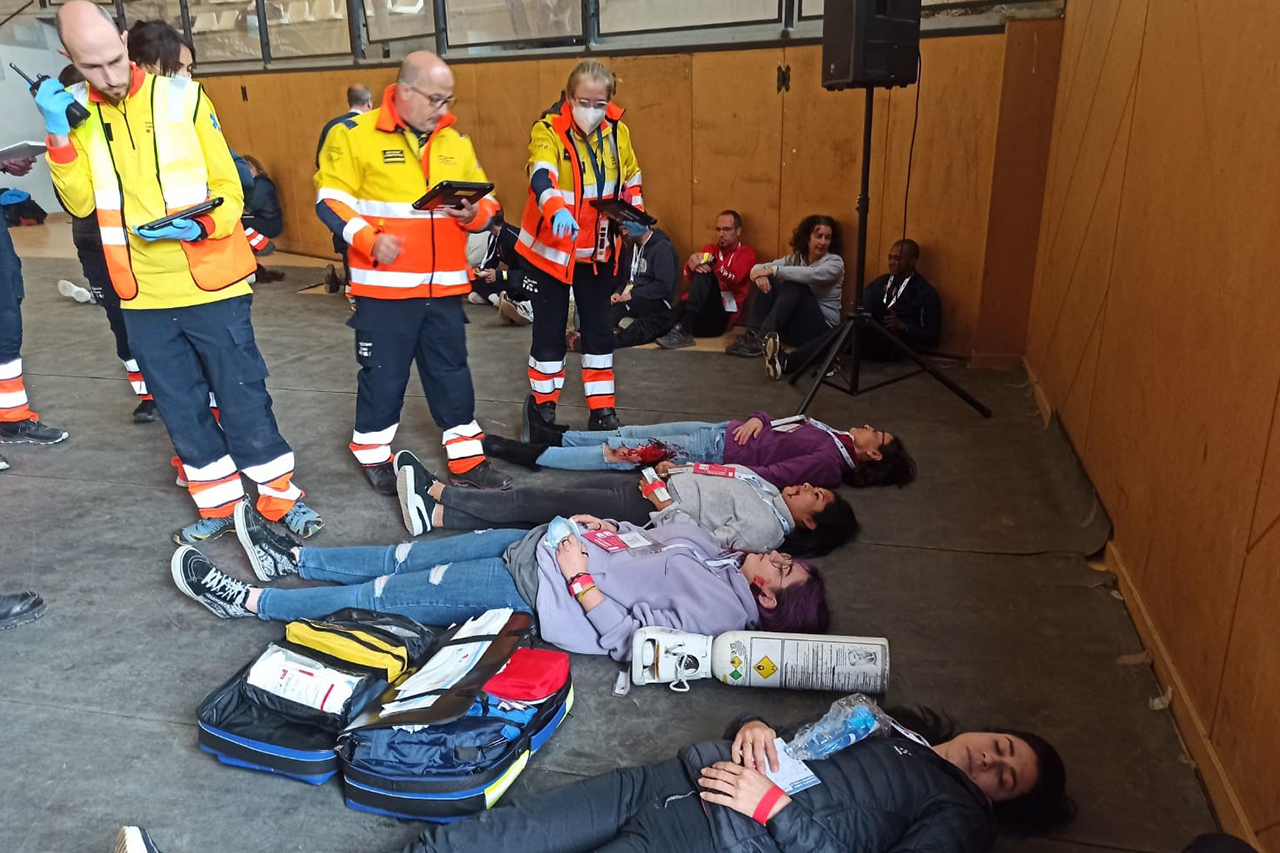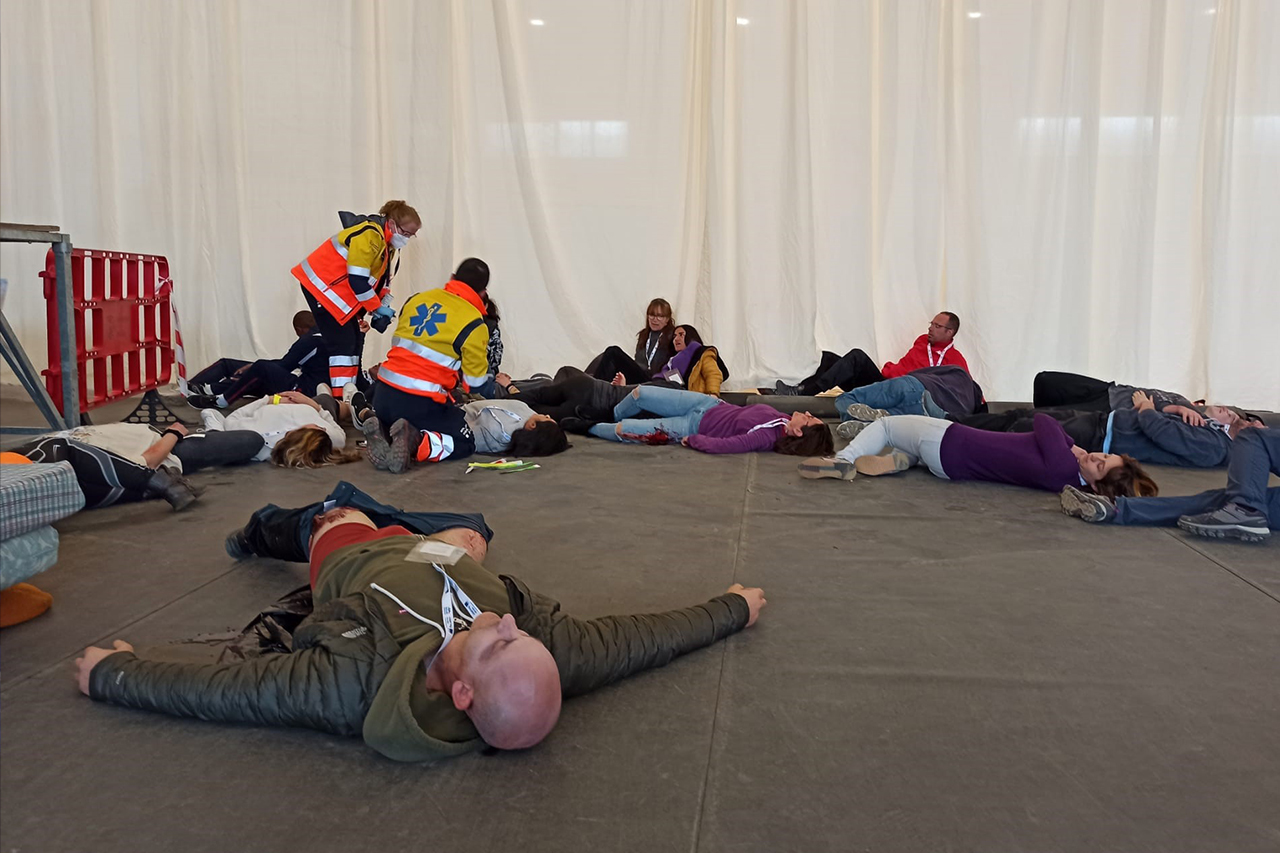The drill, organised and coordinated by the SEM (Medical Emergencies System), has been carried out in a scenario of foreseeable risk, a massive concert with an influx of young people from both sides of the border that has allowed to test the different protocols developed in the EGALURG project.
Today, Thursday, April 21, a healthcare drill has been organised in Llívia (Cerdanya, Girona), recreating, through a Multiple Victims Incident (IMV) simulation how the various medical emergency bodies on both sides of the border have to act and coordinate themselves in such an event. The exercise has served to practice cross-border cooperation and the joint work between healthcare teams for future health emergency situations or catastrophes.
The SEM has been in charge of managing the health emergency in collaboration with units from France, Andorra and La Cerdanya. This incident has enabled putting into practice all the joint action protocols developed over the last 3 years and the “follow me”, role created within the framework of the EGALURG project to act as a link between the participants of different territories and/or countries.


The event: A stampede during a concert in the Pyrenees
The exercise started with an individual incident: the lead singer rushed from the stage with severe trauma, which activated the EGALURG individual trauma assistance protocol. At the same time, the end of the concert is announced, causing a stampede when evacuating the venue with several victims being crushed and resulting in traumatic injuries. It was then that the cross-border IMV protocol was activated.
Upon the arrival of the first units, the basic triage (START) was initiated, as well as the location of the UMPEO device which, on this occasion, has acted as a healthcare area and transfer unit parking area. Identification of all those affected was carried out as they reached the area, and subsequently the advanced triage (META) has been carried out, which allows to determine the severity of injuries and the evacuation order to the appropriate health centres.
During incident management, psychological support has also been offered to victims and interveners.
The management of the incident has been carried out following the IMV-cross-border protocol and communication between the French and Catalan coordination units.
To carry out all the functions, the IMV’s Management Platform for those affected (GA-IMV) has been used as a tool that helps the identification and selection of those affected, while serving as a healthcare report, allowing to maintain traceability from the place of the incident to the hospital network. The transfer of patients was simulated.
Around 70 professionals participated in this event and meant the mobilisation of five SEM units, a medicalised helicopter of the SEM, the Central Unit for Health Coordination (CECOS) of the SEM, as well as psychological support has also been available. On the other hand, two units of the French SAMU and one of the Andorran SUM have also participated. Other interveners such as the Hospital de la Cerdanya and the Hospital de la Cerdanya Foundation have also been directly involved in the drill.
Cross-border Medical Emergencies Congress
The actions and results of this exercise will be analysed in the next days and the learnings of this training exercise on cross-border health cooperation will be presented within the framework of the Cross-border Medical Emergencies Congress that will take place in Alp (Girona) on May 12 and 13.
